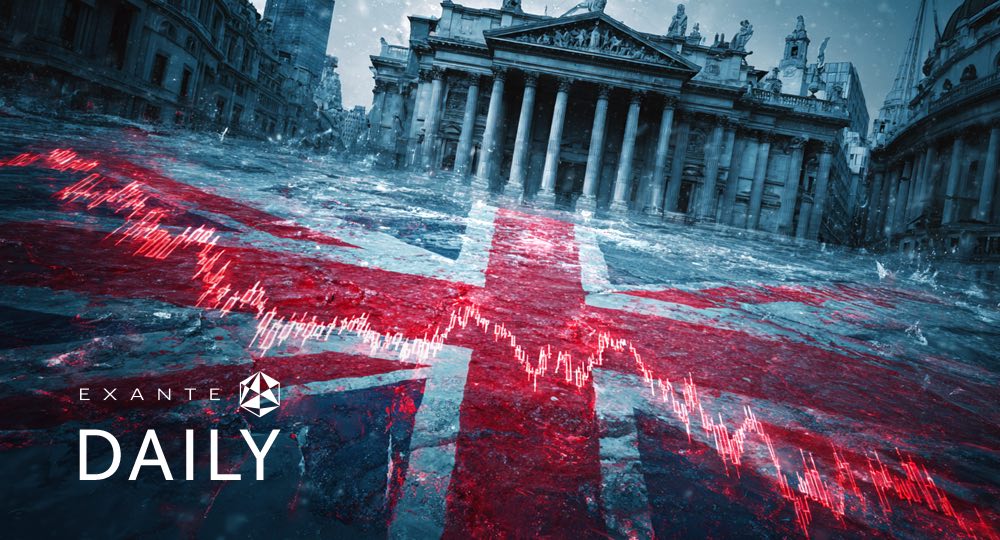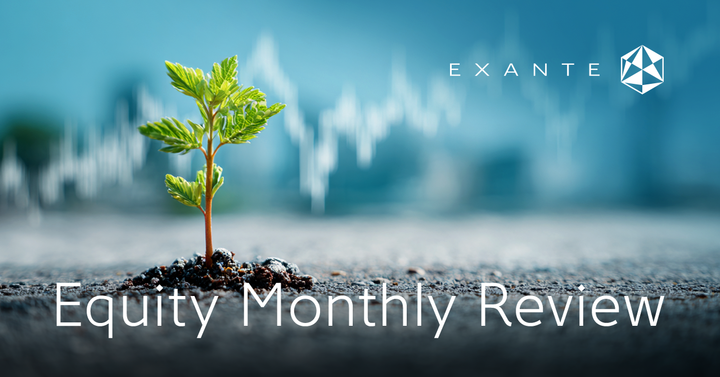Global market indices
US Stock Indices Price Performance
Nasdaq 100 +2.44% MTD and +4.04% YTD
Dow Jones Industrial Average +1.41% MTD and +0.76% YTD
NYSE +1.69% MTD and +5.35% YTD
S&P 500 +1.87% MTD and +2.39% YTD
The S&P 500 is +0.86% over the past week, with 9 of the 11 sectors up MTD. The Equally Weighted version of the S&P 500 is +0.80% over this past week and +1.95% YTD.
The S&P 500 Energy is the leading sector so far this month, +5.76% MTD and +0.02% YTD, while Consumer Staples is the weakest sector at -2.02% MTD and +5.30% YTD.
Over this past week, Energy outperformed within the S&P 500 at +5.40%, followed by Communication Services and Health Care at +2.59% and +1.82%, respectively. Conversely, Consumer Staples underperformed at -1.47%, followed by Materials and Utilities at -0.18% and -0.17%, respectively.
The equal-weight version of the S&P 500 was -0.31% on Wednesday, underperforming its cap-weighted counterpart by 0.04 percentage points.
US equities closed lower on Wednesday, paring earlier gains due to cautious updates on geopolitical developments and trade relations. The S&P 500 decreased by -0.27%, while the Dow Jones Industrial Average remained unchanged, after losing 1.1 points. The Nasdaq Composite shed -0.50%.
A series of lower-than-forecast inflation readings suggests that consumers have yet to fully experience the impact of tariffs. This could be attributed to the temporary pause of the most punitive levies or to companies absorbing additional costs and increasing inventory. However, should higher tariffs become permanent, it will likely be more challenging for companies to shield consumers from these costs.
In corporate news, the Air Force has halved its request to Congress for F-35 aircraft, a significant setback for Lockheed Martin, the leading US defence contractor.
Bank of America CEO Brian Moynihan indicated that investment-banking fees are likely to decline by approximately 25% in Q2, as policy announcements from the Trump administration continue to cool dealmaking activity.
General Motors plans to invest $4 billion in its US plants over the next two years. This decision, influenced by Trump's tariffs, aims to reduce production in Mexico while boosting domestic output of some of its top-selling gasoline-powered vehicles.
Victoria's Secret & Co. projected a profit for Q2 that fell short of Wall Street's expectations. This presents a challenge to the nascent turnaround efforts being led by its relatively new CEO.
Mega caps: The Magnificent Seven had a mostly positive performance this week, with Alphabet +5.53%, Amazon +2.88%, Microsoft +1.89%, Meta Platforms +0.90%, and Nvidia +0.64%, while Tesla -1.69%, and Apple -1.99%.
Energy stocks had a positive performance this week, with the Energy sector itself +5.40%. WTI and Brent prices are +8.86% and +7.83%, respectively, this week. Over this past week Halliburton +10.89%, APA +9.43%, ConocoPhillips +8.61%, Phillips 66 +7.53%, Occidental Petroleum +6.99%, ExxonMobil +6.85%, Chevron +5.39%, Hess +5.34%, Marathon Petroleum +4.91%, Baker Hughes +4.67%, BP +4.20%, and Shell +4.09%, while Energy Fuels -5.12%.
Materials and Mining stocks had a mixed performance this week, with the Materials sector -0.18%. Over the past seven days, Sibanye Stillwater +15.87%, Albemarle +9.01%, CF Industries +3.94%, Yara International +0.51%, and Freeport-McMoRan +0.37%, while Newmont Corporation -3.56%, Nucor -3.88%, and Mosaic -5.89%.
European Stock Indices Price Performance
Stoxx 600 +0.54% MTD and +8.67% YTD
DAX -0.20% MTD and +20.29% YTD
CAC 40 +0.31% MTD and +5.35% YTD
IBEX 35 -0.13% MTD and +21.90% YTD
FTSE MIB +0.30% MTD and +17.61% YTD
FTSE 100 +1.05% MTD and +8.46% YTD
This week, the pan-European Stoxx Europe 600 index is +0.11%. It was -0.27% on Wednesday, closing at 551.64.
So far this month in the STOXX Europe 600, Oil & Gas is the leading sector, +3.77% MTD and +7.55% YTD, while Retail is the weakest at -2.81% MTD and +1.28% YTD.
This week, Oil & Gas outperformed within the STOXX Europe 600, at +2.22%, followed by Health Care and Technology at +2.10% and +1.76%, respectively. Conversely, Telecommunications underperformed at -2.55%, followed by Food & Beverages and Retail, at -2.04% and -2.03%, respectively.
Germany's DAX index was -0.16% on Wednesday, closing at 23,948.90. It was -1.35% for the week. France's CAC 40 index was -0.36% on Wednesday, closing at 7,775.90. It was -0.37% over the past week.
The UK's FTSE 100 index was +0.72% over the past week to 8,864.35. It was +0.13% on Wednesday.
In Wednesday's trading session, in the STOXX Europe 600 index, the Retail sector experienced the most significant decline, largely due to Zara owner Inditex after its Q1 earnings report. The report revealed lower sales and EBIT than anticipated. However, EPS remained largely consistent with expectations, thanks to an increase in associate income and a reduced tax rate.
On a more positive note, Fnac Darty shares increased after revealing its strategic plan for 2030. The plan aims for an operating margin exceeding 3% and a substantial increase in subscribers.
The Real Estate sector also declined, this despite some UK homebuilders like BWAY Holding traded higher. These homebuilders rose in anticipation of a speech by Chancellor Reeves, who is expected to announce plans for over £2 trillion in public spending. This includes nearly £40 billion in grants for affordable housing over the next decade. Other defensive sectors, such as Food & Beverage and Health Care, were also lower.
Conversely, Banks were the best performers, along with Chemicals and Industrial Goods & Services. Investors’ focus centered on Ricardo after WSP Global agreed to acquire Ricardo for 430 pence per share, valuing the deal at £363.1 million. The Technology sector also closed higher on Wednesday.
According to LSEG I/B/E/S data, Q1 earnings are expected to increase 2.4% from Q1 2024. Excluding the Energy sector, earnings are expected to increase 7.9%. First quarter revenue is expected to increase 2.4% from Q1 2024. Excluding the Energy sector, revenues are expected to increase 4.3%. Of the 285 companies in the STOXX 600 that have reported earnings to date for Q1 2025, 58.6% reported results exceeding analyst estimates. In a typical quarter 54% beat analyst EPS estimates. Of the 346 companies in the STOXX 600 that have reported revenue to date for Q1 2025, 54.9% reported revenue exceeding analyst estimates. In a typical quarter 58% beat analyst revenue estimates.
During the week of 16th June, one company is expected to report quarterly earnings.
Financials is the sector with most companies reporting above estimates at 76%. Financials and Industrials, both with a surprise factor of 10%, are the sectors that beat earnings expectations by the highest surprise factor. In the Energy sector, 59% of companies have reported below estimates. Consumer Cyclicals’ earnings surprise factor was the lowest at -10%. The STOXX 600 surprise factor is 6.4%, which is above the long-term (since 2012) average surprise factor of 5.8%. The forward four-quarter price-to-earnings ratio (P/E) for the STOXX 600 sits at 14.4x, slightly above the 10-year average of 14.3x.
Other Global Stock Indices Price Performance
MSCI World Index +1.71% MTD and +5.97% YTD
Hang Seng +4.63% MTD and +21.47% YTD
This week, the Hang Seng Index was +3.01%. The MSCI World Index was +0.65%.
Currencies
EUR +1.23% MTD and +10.99% YTD to $1.1487.
GBP +0.64% MTD and +8.30% YTD to $1.3545.
The US dollar experienced a broad decline on Wednesday following the release of data indicating that inflation in the US increased less than anticipated last month. Headline CPI, as reported by the Labor Department's Bureau of Labor Statistics (BLS), rose by 0.1% last month, following a 0.2% increase in April. Underlying price pressures also remained subdued in May, with core CPI advancing by only 0.1% after a 0.2% rise in April. Nevertheless, the y/o/y inflation rate increased to 2.4% after registering a 2.3% gain in April.
However, the dollar briefly pared some of its losses after the US President announced that a trade deal with China was ‘done.’ A White House official further elaborated on the agreement, stating it permits the US to impose a 55% tariff on imported Chinese goods. This comprises a 10% baseline ‘reciprocal’ tariff, a 20% tariff for fentanyl trafficking, and a 25% tariff reflecting pre-existing tariffs. In return, China would levy a 10% tariff on US imports.
The dollar index was -0.40% to 98.64 on Wednesday. The Dollar Index is -0.18% this week and -0.81% so far MTD. It has fallen -9.08% YTD.
On Wednesday the euro appreciated +0.55% against the dollar, reaching $1.1487. The euro registered a weekly +0.61% gain against the US dollar.
The British pound settled +0.36% higher to $1.3545. On Wednesday, it was softer against the euro at 84.77 pence. For the week, the British pound declined slightly -0.01% versus the US dollar.
The Japanese yen strengthened against the dollar by +0.23% to ¥144.50. The Japanese currency is +0.32% MTD and +7.93% YTD.
Note: As of 5:00 pm EDT 11 June 2025
Cryptocurrencies
Bitcoin +3.95% MTD and +16.53% YTD to $108,781.30.
Ethereum +9.02% MTD and -16.34% YTD to $2,801.07.
Bitcoin is +3.63% and Ethereum +6.92% over the past 7 days. On Wednesday Bitcoin was -0.77% to $108,781.30 and Ethereum +1.79% to $2,801.07.
Bitcoin and Ethereum have been rising on better than expected US economic data this week. CPI came in cooler than expected at 2.4% year-over-year and core CPI also beat estimates at 2.8%. This supported hopes that the US Federal Reserve may be in a position to cut its benchmark interest rate at least once this year. However, last Friday’s stronger-than-expected nonfarm payroll numbers and continuing global trade uncertainty, with the 9 July deadline for a 90-day pause on tariffs announced in April, fast approaching, means that the Fed will not be rushing in to cut rates. Market risk sentiment also improved this week with the announcement of a potential trade deal between the US and China. The agreement is expected to reduce macroeconomic threats to the global economy, although the tariffs may still cause inflation due to supply chain instability for consumer goods companies and others that are importing from China.
Note: As of 5:00 pm EDT 11 June 2025
Fixed Income
US 10-year yield +2.4 bps MTD and -14.9 bps YTD to 4.427%.
German 10-year yield -0.3 bps MTD and +16.8 bps YTD to 2.537%.
UK 10-year yield -10.0 bps MTD and -1.7 bps YTD to 4.551%.
Yields on US Treasuries fell for the third consecutive day on Wednesday, driven by encouraging news regarding inflation and developments in US - China trade relations.
A 10-year Treasury auction demonstrated a robust appetite for longer-dated US securities. This outcome alleviated some concerns that foreign investors might be withdrawing from the market, though this sentiment could be tested again later today with a $22 billion auction of 30-year bonds.
The 10-year notes were sold at a high yield of 4.421%, 0.7 bps lower than before the auction. The bid-to-cover ratio stood at 2.52x, consistent with recent auctions.
The yield on the US 10-year Treasury note was -5.3 bps, settling at 4.427%. The 30-year bond yield was -1.2 bps to 4.932%. On the short end of the curve, the two-year Treasury yield, which typically correlates with interest rate expectations, fell by -7.7 bps to 3.956%.
For the week, the yield on the 10-year Treasury note was +6.8 bps. The yield on the 30-year Treasury bond was +4.4 bps. On the shorter end, the two-year Treasury yield is +7.3 bps this week.
Fed funds futures traders are now pricing in a 2.4% probability of a June cut, down from 3.6% last week, according to CME Group's FedWatch Tool. A rate cut at September’s Fed meeting now is seen as the next most likely, with a 69.2% probability. Traders are currently pricing in 49.3 bps of cuts by the end of the year, less than last week’s 55.9 bps.
Across the Atlantic, eurozone government bond yields reversed course and traded lower on Wednesday. This shift was primarily influenced by cooler-than-expected US CPI data and investors' assessment of progress in talks aimed at easing US - China trade tensions.
On the data front in Europe, negotiated wage growth across the 20-nation euro zone is projected at 3.1% this year, according to the ECB monthly wage tracker. The ECB has consistently maintained that wage growth around 3% would align with its 2% inflation target.
Money markets are fully pricing in a 25 bps ECB rate cut by December, with approximately a 60% probability of this occurring as early as September.
In the UK, on Wednesday the 10-year gilt +0.7 bps to 4.551%. The UK 10-year yield is -6.0 bps over the past 7 days.
Germany's 10-year yield +1.0 bps at 2.537%. Germany's policy-sensitive two-year yield -0.3 bps to 1.848%, On the longer end of the maturity spectrum, Germany's 30-year yield was +3.2 bps on Wednesday, at 3.001%.
For the week, the German 10-year yield was +1.0 bps. Germany's two-year bond yield +4.3 bps, and on the longer end of the curve, Germany's 30-year yield is +0.5 bps this week.
The spread between US 10-year Treasuries and German Bunds is now 189.0 bps, 5.8 bps higher than last week’s 183.2 bps.
On Wednesday, Italy's 10-year yield +0.9 bps 3.450%. The spread between Italy's 10-year yield compared to Germany's Bund yield stands at 91.3 bps, 4.9 bps narrower than last week’s 96.2 bps spread, having hit 86.7 bps on Tuesday, its lowest level since February 2021. Italian 10-year yields decreased -3.9 bps over the past 7 days.
Commodities
Gold spot +1.95% MTD and +28.16% YTD to $3,353.26 per ounce.
Silver spot +9.87% MTD and +25.55% YTD to $36.23 per ounce.
West Texas Intermediate crude +12.35% MTD and -4.14% YTD to $68.30 a barrel.
Brent crude +9.44% MTD and -5.17% YTD to $69.93 a barrel.
Gold prices are -0.66% this week, but still +28.16% YTD. The drop this week may be attributed to the US-China trade discussions as a de-escalation in trade tensions could diminish demand for safe-haven assets.
Spot gold +0.94% on Wednesday to reach $3,353.26 per ounce. The US dollar index registered a loss of -0.40%, making gold affordable for international buyers holding other currencies.
Investors’ attention is currently focused on US Producer Price Index data, scheduled for release today. This precedes the FOMC meeting, set to take place from 17th - 18th June.
This week, WTI and Brent are +8.86% and +7.83%, respectively. Oil prices ended Wednesday’s trading session more than five percentage points higher after the US defence department authorised some staff to leave the embassy in Baghdad and allowed military service-members’ families in parts of the Middle East to leave the region.
Brent crude futures concluded trading with an increase of $3.34, or +5.02%, settling at $69.93 a barrel. WTI crude increased $3.56, or +5.50%, reaching $68.30. Both benchmarks hit their highest since early April.
Earlier in the day, geopolitical tensions escalated following a statement from Iran's Minister of Defense, Aziz Nasirzadeh, who indicated that Tehran would target US bases in the region should nuclear talks fail and conflict with Washington emerge. Furthermore, in an interview released on Wednesday, the US President stated he was less confident in Iran's willingness to cease uranium enrichment as part of a nuclear agreement with Washington. The ongoing friction with Iran suggests that its oil supplies are likely to remain restricted by sanctions.
Adding to the upward pressure on prices was news of a potential trade agreement between the US and China. Such a deal is anticipated to stimulate energy demand in the world's two largest economies. President Donald Trump confirmed that Beijing would provide magnets and rare earth minerals, while the US would permit Chinese students to enroll in its colleges and universities. He also noted that the agreement is contingent upon final approval from both himself and President Xi Jinping.
EIA weekly report. Last week, according to the Energy Information Administration (EIA), US crude oil inventories decreased as refining activity intensified. This surge in refining operations subsequently led to an increase in both gasoline and distillate stockpiles.
For the week ending 6th June, crude inventories fell by 3.6 million barrels, settling at 432.4 million barrels. Additionally, crude stocks at Cushing, Oklahoma, a key delivery hub, saw a reduction of 403,000 barrels during the same period.
Refinery crude runs rose by 228,000 barrels per day (bpd) last week, with utilisation rates climbing 0.9 percentage points to 94.3%. Net inputs of crude oil to refineries reached their highest level since December 2019, according to EIA data.
US gasoline stocks increased by 1.5 million barrels, reaching 229.8 million barrels for the week. Distillate stockpiles, which encompass diesel and heating oil, also rose by 1.2 million barrels, totaling 108.9 million barrels. However, the four-week average product supplied for distillate fuel declined last week to 3.458 million bpd, marking its lowest point since April 2024.
Net US crude imports saw an increase of 451,000 bpd last week. Interestingly, the US did not receive any crude imports from Saudi Arabia, a first since January 2021, according to the data.
Note: As of 5:00 pm EDT 11 June 2025
Key data to move markets
EUROPE
Thursday: Speeches by ECB Executive Board member Isabel Schnabel, Dutch central bank Governor Klaas Knot, Bank of Italy Governor Fabio Panetta, Bank of Spain Governor José Luis Escrivá, ECB Vice president Luis de Guindos, and ECB Executive Board Member Frank Elderson.
Friday: German Consumer Price Index (CPI) and Harmonized Index of Consumer Prices, Spanish CPI, Spanish Core CPI and Harmonized Index of Consumer Prices, Eurozone’s Industrial Production and Trade Balance, and speeches by Bank of Spain Governor José Luis Escrivá, and ECB Executive Board Member Frank Elderson.
Monday: Italian CPI.
Tuesday: German ZEW Current Situation and Economic Sentiment Surveys, and Eurozone ZEW Economic Situation Survey.
Wednesday: Eurozone Harmonized Index of Consumer Prices and Core Harmonized Index of Consumer Prices.
UK
Thursday: GDP, Industrial Production, and Manufacturing Production.
Friday: Consumer Inflation Expectations.
Wednesday: CPI, Core CPI, and Retail Price Index.
USA
Thursday: Initial and Continuing Jobless Claims, Producer Price Index (PPI) and Core PPI.
Friday: Michigan Consumer Expectations and Sentiment Indices and UoM 1-year and 5-year Consumer Inflation Expectations.
Monday: NY Empire State Manufacturing Index.
Tuesday: Retail Sales and Industrial Production.
Wednesday: Fed Interest Rate Decision, Fed Monetary Policy Statement, FOMC Economic Projections, and FOMC Press Conference, Initial Jobless Claims, Building Permits, and Housing Starts.
CHINA
Sunday: Industrial Production and Retail Sales.
JAPAN
Monday: BoJ Interest Rate Decision and Monetary Policy Statement.
Tuesday: BoJ Press Conference, Exports, Imports, Merchandise Trade Balance, and Adjusted Merchandise Trade Balance.
Global Macro Updates
US-China tariff talk results lead to more questions. Negotiations in London this week have resulted in a “done deal,” according to US President Trump. "WE ARE GETTING A TOTAL OF 55% TARIFFS, CHINA IS GETTING 10%. RELATIONSHIP IS EXCELLENT!," Trump wrote on his Truth Social media on Wednesday.
The ‘deal’ appears to include an agreement that China will increase the supplies of rare earth minerals and magnets needed for the US automotive industry while the US will allow Chinese students in its colleges and universities. However, there are reports that China has only agreed to ease the restrictions on exports of rare earths for six months. As noted by Reuters, a White House official said the agreement allows the US to charge a 55% tariff on imported Chinese goods. This includes a 10% baseline "reciprocal" tariff, a 20% tariff for fentanyl trafficking and a 25% tariff reflecting pre-existing tariffs. China would charge a 10% tariff on US imports.
Despite President Trump heralding the deal, the Chinese Premier, Xi Jinping, still needs to give his final approval on the terms agreed late on Tuesday night at Lancaster House in London. US Commerce Secretary Howard Lutnick, speaking at the White House on Wednesday, said he thinks the agreement will be completed within days and that he didn’t expect a written version to be released publicly.
Meanwhile, Treasury Secretary Scott Bessent is reported to have suggested extending trade tariff pauses with countries negotiating in good faith. This comes as trade certainty is continuing with major partners including the EU. According to CNBC, Lutnick said that an EU trade deal would likely come last, partially due to the need to deal with a bloc of countries rather than a single government.
Bond market surprises. Bond yields, particularly on the longer end, have been rising throughout much of this quarter. Concerns around US debt ratios and the sustainability of fiscal policies and debt levels have been rising, as reflected in Moody’s downgrade of the US sovereign rating and disagreements over the “big, beautiful tax bill” that is still working its way through Congress.
Longer duration bonds, particularly 30-year bonds, have been affected not just in the US, but across the globe. In Europe, German bond yields surged in March following the announcement of (now) Chancellor Friedrich Merz’s €1tn spending splurge on defence and infrastructure. This spending spree, along with the removal of Germany’s debt brake, has led to spread compression across Europe, with the former outcasts, the periphery countries of Spain, Italy and Greece in particular, seeing their yields drop on their higher domestic growth. As noted by the Financial Times, these countries have mounted a “relentless” rally that has narrowed the gap with Germany’s benchmark borrowing costs to nearly the smallest in more than a decade. These tighter spreads also reflect a longer-term strengthening in Spain’s and Greece’s public finances. Italy’s rating was raised to BBB+ in April by S&P and Moody’s also raised its outlook to Baa3 positive In May due to its better than expected fiscal performance and stable political environment. These results are in sharp contrast to the situation not just in the US and Germany but in the UK, where growing doubts about the ability of the Labour government to honour the promises made in its last budget and in the spring statement without raising taxes further.
While global bond markets have recently experienced a modest decline in yields, the underlying trend highlights their increased sensitivity to shifts in economic and policy landscapes. This repricing occurs amid economic data indicating a state of fragile resilience.
In the US, the labour market has maintained stability. However, recent indicators suggest a moderation in consumer spending and business investment. Conversely, the Conference Board's consumer sentiment index saw a rebound in May, providing a slight contrast to otherwise cautious data. In Europe, economic conditions remain subdued. While business surveys suggest tentative stabilisation, growth momentum is weak and inconsistent across various sectors.
Given this environment, central banks confront an increasingly asymmetric challenge. Although rate cuts from most major central banks are anticipated in the coming months, the prevailing global conditions no longer support a straightforward disinflationary narrative that previously underpinned a widespread easing cycle.
Despite higher yields in the US, the dollar has remained soft in recent weeks. This divergence continues to reflect structural concerns regarding the enduring nature of US global financial leadership.
While every effort has been made to verify the accuracy of this information, EXT Ltd. (hereafter known as “EXANTE”) cannot accept any responsibility or liability for reliance by any person on this publication or any of the information, opinions, or conclusions contained in this publication. The findings and views expressed in this publication do not necessarily reflect the views of EXANTE. Any action taken upon the information contained in this publication is strictly at your own risk. EXANTE will not be liable for any loss or damage in connection with this publication.
Questo articolo viene fornito all'utente soltanto a scopo informativo e non deve essere considerato come un'offerta o una sollecitazione di un'offerta di acquisto o di vendita di investimenti o servizi correlati che possono essere qui menzionati.






